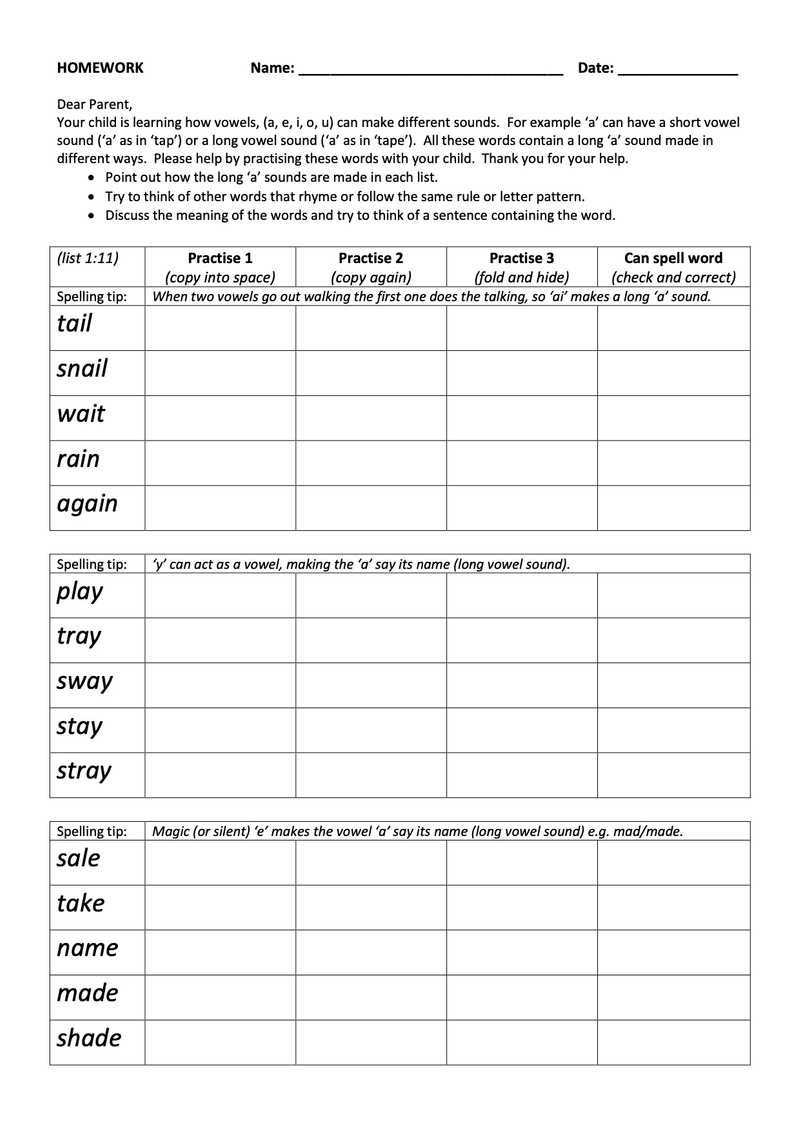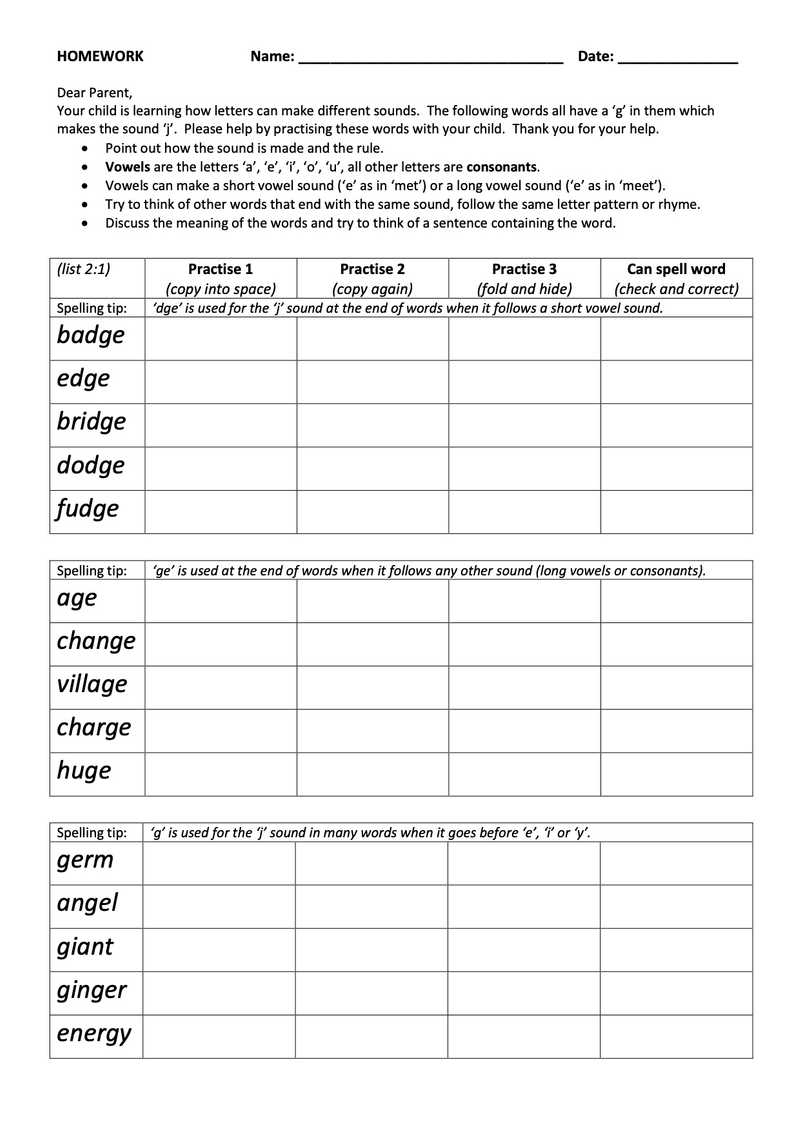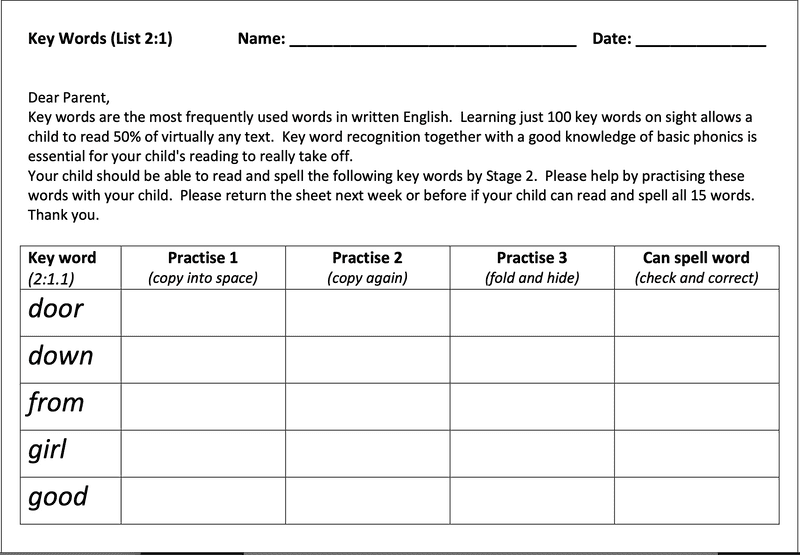A2a. Spelling Programme
AIM: To ensure complete coverage, consistent recording and tracking of pupil progress in spelling across the whole school.
We have created a logical, consistent and comprehensive structure for implementing an all-through spelling system incorporating both Letters and Sounds for EYFS and the entire PoS of the National Curriculum.
The Spelling Overview shows the spelling programme overview for Reception and KS1. The overview for KS2 is set out in the same way. Stage 2 PoS refers to the spelling content required across Year 2 and so on. All are taken from the National Curriculum PoS for spelling.
Year 2 Spelling PoS Overview Example
Each stage comprises of 30 spelling units (20 at KS2). To ensure full coverage, teachers need to think of teaching approximately 10 units per term or 5 per half term.
For clarity and consistency, each unit is numbered throughout all documentation and records. 2:1 refers to Stage 2: Unit 1, 3:5 would be Stage 3: Unit 5 and so on.
Each and every unit consists of 3 related spelling ‘rules’, ‘tips’ or teaching points (A, B, C) exemplified by 5 words which ‘follow the rule’. Children should always be told that there are often others that do not! Whenever possible, examples have been chosen which also contain the short or long vowel sounds a,e,i,o,u , so they may play a part in as many lessons as possible.
Each Unit has an individual Homework Sheet so that children can consolidate by practicing them at home.
Every homework sheet has a letter to parents explaining the spelling rules being covered and all the information they may need to understand the rule help their children with the homework.
The homework uses a look, cover, write, check approach to encourage repetition and ‘muscle memory’.
Class Spelling Records are provided to record coverage and/or performance.
Children can track their own scores and progress on their own Record Sheet and SEE the progress they are making which can be highly motivational.
We recommend that after 5 Units (or half a term) the teacher assesses the learning to date. This is done quickly and efficiently using the Spell Checks provided. The tests are sentences for dictation. The teacher emphasises and repeats the words in bold which are examples of the rules the pupils have been learning.
A2b. The Key Word System
AIM: To ensure a consistent approach to the teaching, recording, reporting and tracking of pupil progress in Key Word acquisition across the whole school.
The Key Word System is based on the high frequency Literacy Strategy Key Words which in turn was derived from the first 300 high frequency words of which the first 100 alone make up 50% of all adult reading and writing.
The Key Words have been organized into banks of 15 words per term, per year from Reception to Y5.
For clarity and consistency, each word bank is numbered throughout all documentation and records. List 2:1 refers to Year 2:List 1. List 5:3 would therefore be Year 5:List 3 and so on.
Key Word Screens provide an overview record of Key Word acquisition as well as an initial assessment when introducing the system or assessing a pupil joining the school. As Key Words are meant to be memorized, they should only be given a maximum of 3 seconds to read each Key Word and not be given any assistance or allowed to try to build the word phonetically.
Homework sheets are provided for every word bank so that children can consolidate by practicing them at home. Every homework sheet explains to parents the importance of learning the Key Words and encourages them to help their child with the activity. The homework uses a look, cover, write, check approach to encourage repetition and ‘muscle memory’.
To encourage the children to learn the words, we have a highly motivational reward system.
Pupils have their own Key Word Record Cards. Stickers are awarded when the children learn the words in each list. They receive a ‘bronze award’ for learning the first 15 (read and spell); silver when they learn the next 15 and gold when they know all 45 for the year.
Pupil progress can be tracked simply tracked on the Class Record. Flashcards of all Key Words are provided to assist with assessment and any intervention or support work.
A2c. The Phonics System
For those children who are not yet secure at phase 5, it will be necessary to continue with discrete phonics sessions. Effective teaching must build on the children’s current knowledge, skills and ability. To this end, all children are screened to determine their level of phonic knowledge.
We have a comprehensive 9-step phonic screen in order to identify precisely where a child is in terms of the acquisition of phonological knowledge. This in turn informs teaching and intervention, ensuring that the child receives appropriate support at the correct level. All resources are provided – record sheets, flash cards, instructions etc., so the screen is easily and quickly completed.
- Screen 1: Sight Words
- Screen 2: Rhyming Strings/Hearing Ryhme
- Screen 3: Grapheme/Phoneme Correspondence
- Screen 4: Hearing Phonemes
- Screen 5: Final Blends
- Screen 6: Initial Blends
- Screen 7: Long Vowel Phonemes 1
- Screen 8: Long Vowel Phonemes 2
- Screen 9: Upper Case Letter Knowledge
Screen 7: Long Vowel Phonemes
Once it has been established precisely where a child is in acquisition of phonological knowledge a phonics programme provides all teaching points, records and homework. It allows the focus of teaching and intervention to be targeted at need rather than adhering to a programme which may not be required or relevant.
 In this way the programme is ‘fad free’ and future proof but allows
schools to use any and all resources and approaches at their disposal
(Letters and Sounds, Progression in Phonics, Jolly Phonics etc) in order
to ensure the systematic acquisition of phonic knowledge. For this
purpose each phonic screen area is referenced with the resources and
phonic programmes available.
In this way the programme is ‘fad free’ and future proof but allows
schools to use any and all resources and approaches at their disposal
(Letters and Sounds, Progression in Phonics, Jolly Phonics etc) in order
to ensure the systematic acquisition of phonic knowledge. For this
purpose each phonic screen area is referenced with the resources and
phonic programmes available.
A whole school approach with immediate impact.
Shirley Christie, DHT: Brookfield CP School





